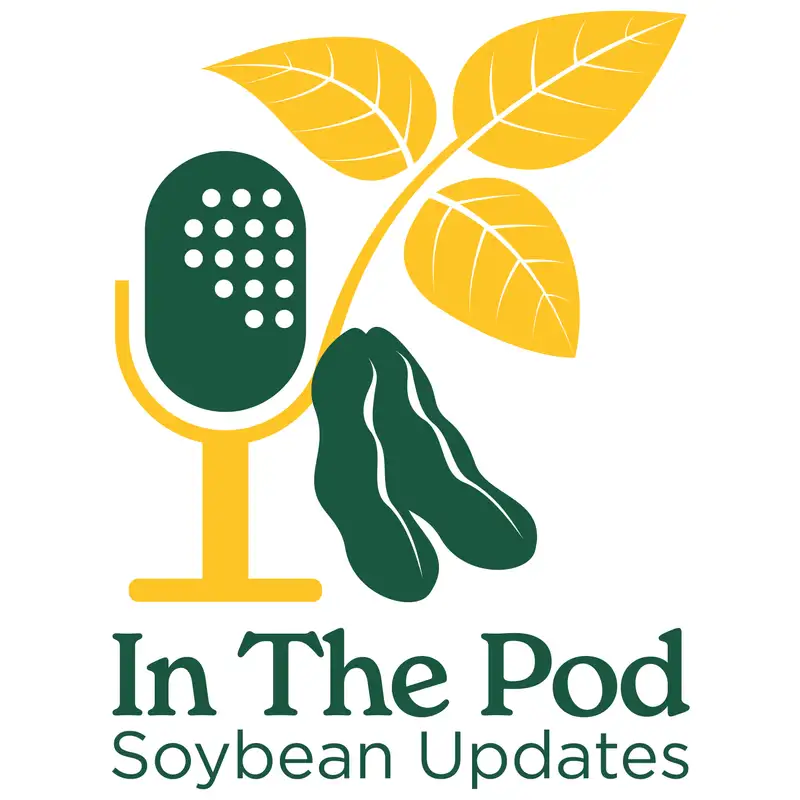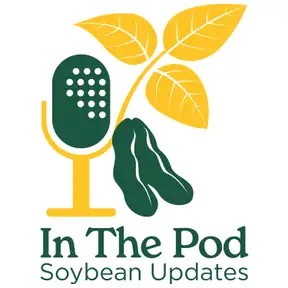04/03/25 So Much to Consider: Getting Ready for Planting
You're listening to In The Pod, soybean updates, a weekly trek into the latest soybean information from NDSU Extension. Yes. It's a bit early to get into those soybean fields, but is it too early to be thinking about it? According to Ana Carcedo, NDSU Extension agronomist, now is a great time to think spring. Well, Ana, the planting season is getting closer. What should soybean farmers be thinking about?
Ana Carcedo:That's a great question, Bruce. So, actually, if you already choose what variety are you going to plant, there is still three decisions that you have to make that they are actually crucial for any planting season, and it's planting dates, planting rates, and row spacing. And these are actually organizing in order of priority. So when we are talking about planting dates, we always say that the earliest that you can get in the field, it's the best. There is a huge background about crop physiology behind this decision, and it's it's about radiation. When we talk about growing a plant one zero one, we always say that there is three things that a plant needs, and it's water, nutrients, and radiation. When we are talking about water, it's actually kind of hard to manage. If you have irrigation, you can manage. If you don't, you you cannot do much. When we are talking about nutrients, it's pretty easy. We can say that you use fertilizer. But when we are talking about radiation, that's the energy that comes from the sun, might be a little bit more tricky. It's only the maturity group that you choose and the planting date. So, basically, what you are doing is that you cannot change how much radiation you get every day, but you can change how long are you accumulating that radiation. So when we are talking about planting date and the earliest possible, basically, what you are doing is just getting a longer planting season.
Bruce Sundeen:How do planting rates and row spacing affect soybean production?
Ana Carcedo:So when we're talking about planting rates and row spacing, we are kind of following the same rationale as planting dates, and it's all about maximizing how much radiation we can capture. So with narrower row spacings and higher plant densities, what you're doing is just closing that canopy faster, and you are capturing more radiation. Usually, when we're talking about planting rates, we always talk about that optimum value, that optimal planting rate that we want to achieve. But it changes every year because it changes varying the environment that you are. When we are talking about planting rate, we cannot stop talking about row spacing as well because they actually interact a lot. Basically, when we are talking about row spacings and wider row spacings, we know that we might need to pump up a little bit our plant density. So if we are talking about environments, we are more towards the east, and we want a narrow row spacing because we want that yield potential, and we are talking about twelve, fourteen inches, we might want to put around a 170,000 pure leaf seeds. But if we want to go to another strategy and go more towards wide rows, we might want and we are talking about 24, 30 inches. We might want to put a 190,000 plants. When we are talking about the West, that is a completely different environment, and we want to talk about trying to use more narrow row spacing, I'm talking about, like, seven, ten inches, we might be talking about an ideal plant population of a 150,000 pure lip seeds per acre. Sometimes it's not about maximizing yields. It's about managing some kind of history that you have in your field.
Bruce Sundeen:Ana, do you have any recommendations for those who wanna plant early?
Ana Carcedo:Yes. So when you're planting early, that option of trying to having the the maximum yield potential, and there's a few things that you should consider. You have to have a good soil moisture. You have to have a good salt temperature. Trying to go and get those 50 Fahrenheit degrees that that you want. And also, and this is really important, check the forecast. It's not only about the temperature today, but how it's going to be the following ten, fifteen days. That's the time that is going to take for that seed to germinate. Also, when we are talking about planting early, it's really important to consider having a good seed treatment, and and you can actually check weights consideration on this podcast.
Bruce Sundeen:Thanks, Ana. Our guest has been Ana Carcedo, NDSU Extension agronomist. You're listening to In The Pod, soybean updates, a weekly trek into the latest soybean information from NDSU Extension supported by the North Dakota Soybean Council.

